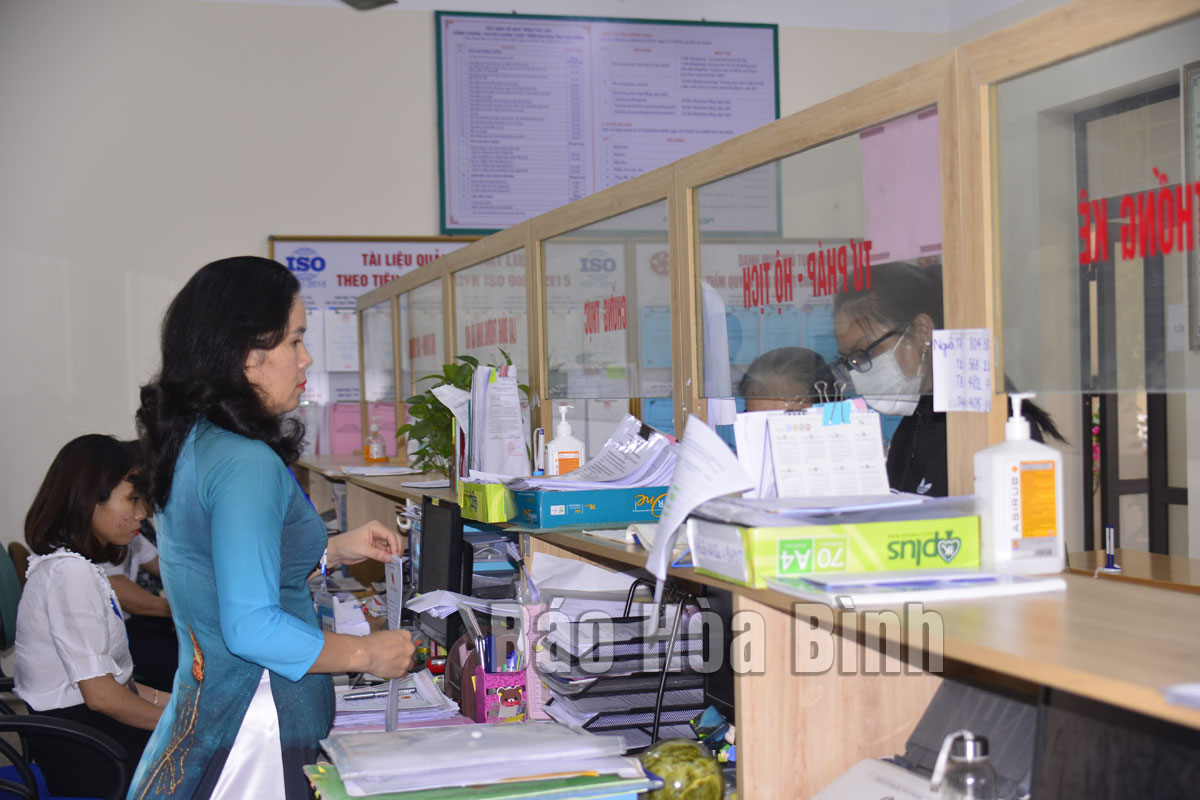



Staff in charge of receiving documents and returning results in Phuong Lam ward, Hoa Binh city are handling administrative procedures.
Bui Quang Diep, Vice Chairman of the city People’s Committee said in early 2022, the People’s Committee issued Decision No. 31/QD-UBND dated January 10, 2022 on the administrative reform plan in 2022. The city completed all 46 tasks set in the plan.
The municipal People's Committee has directed the synchronous implementation of administrative reform in six areas, focusing on accelerating administrative reform serving people and organizations, building e-government and digital government towards developing Hoa Binh into a smart and modern city.
The results of administrative reform have been regularly monitored and evaluated by the municipal authority, thus creating create a fundamental change in awareness and responsibility in implementing the administrative reform work of each agency, and among civil servants and public employees.
Most of the regulations and directives related to administrative reform have been fully implemented. The modern "one-stop shop" divisions at all levels have been operating effectively, creating strong changes in providing public services online for people and businesses.
As many as 99.4% of the total number of documents were received and processed online via the public service portal.
30,000 leaflets guiding the use of public services online were issued, while a workshop on digital transformation solutions and smart urban ecosystem was organised.
As many as 64 community digital technology groups were formed in wards and communes to direct people how to join digital transformation process.
The electronic confirmation of copies from the original has been carried out in all the 19 wards and communes in the city.
The implementation of administrative reform in the locality has helped save over 3 billion VND (over 126,000 USD) for the State budget./.